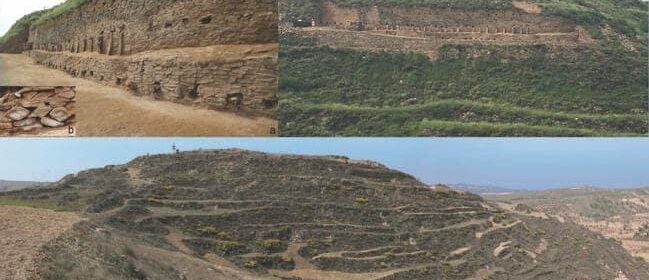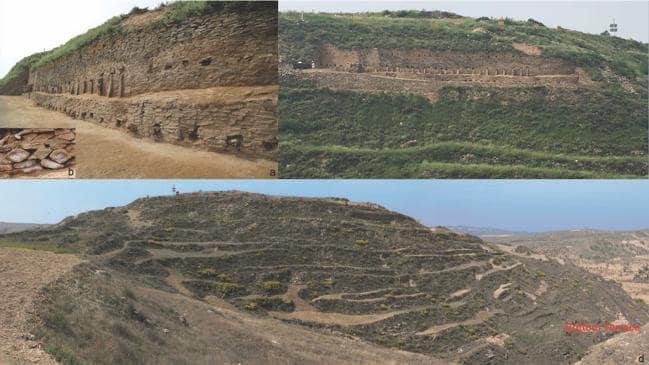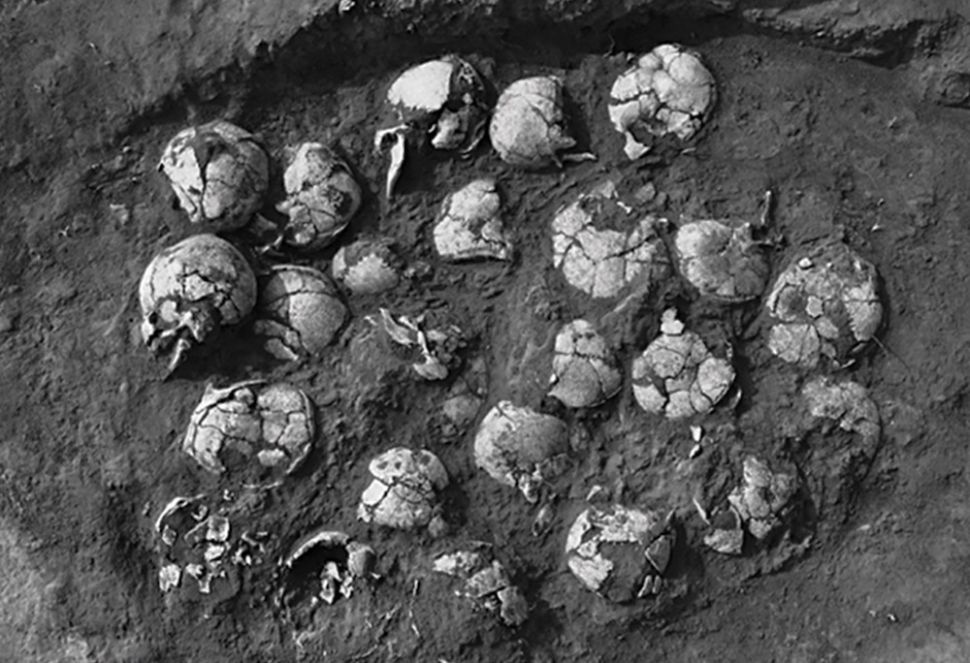Massive Pyramid, Lost City and Ancient Human Sacrifices Unearthed in China

Massive Pyramid, Lost City and Ancient Human Sacrifices Unearthed in China
Archaeologists have uncovered the ruins of an ancient abandoned city in China that practiced human sacrifice.
Shimao, a Neolithic site in present-day Shaanxi province, was once believed to be an unexcavated part of the Great Wall of China.

However, archaeologists researching the site now believe it was once a bustling city surrounded by a massive 4,300-year-old pyramid.
The structure was not a pyramid in the traditional sense of having straight equal sides.
Instead it was an enormous stepped mound covering some 60 acres at its base and reaching 230 feet in height, according to the research published in the journal Antiquity.
In comparison, the base of Great Pyramid of Giza covers some 13 acres, but reaches some 460 feet into the sky.
Stone buttresses lined each of the pyramid’s 11 huge steps and part-animal, part-human faces have been found etched into its stones along with distinctive eye-like symbols.
These symbols were previously found in much later settlements.
On the top step, palaces for the city’s rulers were built with wood and rammed earth, and there was even a water reservoir.
Six pits containing decapitated human heads were found in the outer rampart and the victims may have been captives from the nearby city of Zhukaigou.
“The jade objects and human sacrifice may have imbued the very walls of Shimao with ritual and religious potency,” the study says.
“In the outer gateway of the eastern gate on the outer rampart alone, six pits containing decapitated human heads have been found.”

The pyramid and its surrounding settlement were fortified with ramparts and gates, the study states.
According to the research, the site had “extensive palaces built of rammed earth, with wooden pillars and roofing tiles, a gigantic water reservoir, and domestic remains related to daily life”.
The pyramid was visible from every aspect of the city, providing a “constant and overwhelming reminder to the Shimao population of the power of the ruling elites residing atop it”.
“Chinese civilisation has long been assumed to have developed in the Central Plains in the mid to late second millennium BC,” says the study.
The new findings, however, indicate “symbols associated with Central Plains civilisations were, in fact, created much earlier at Shimao”.